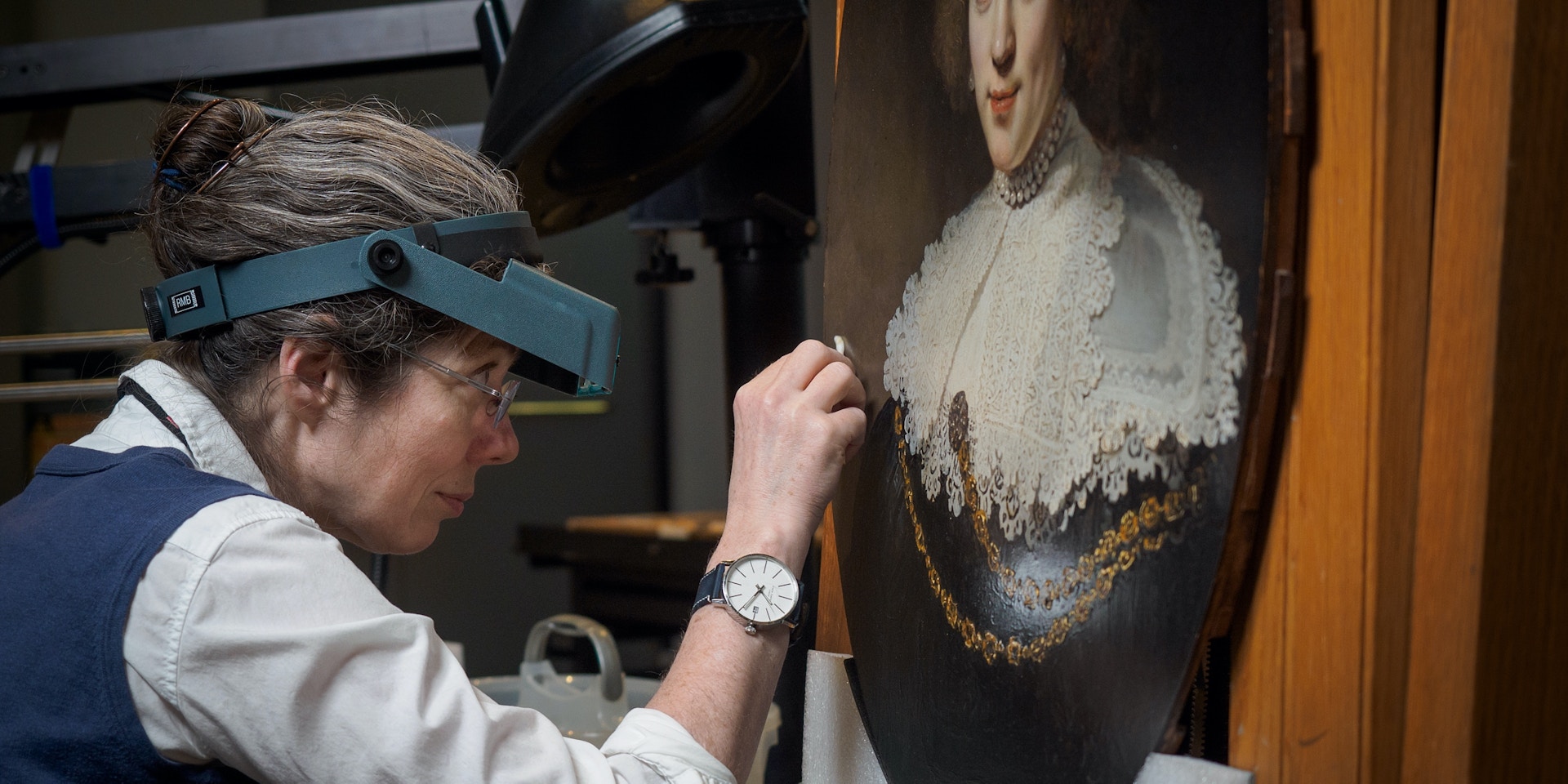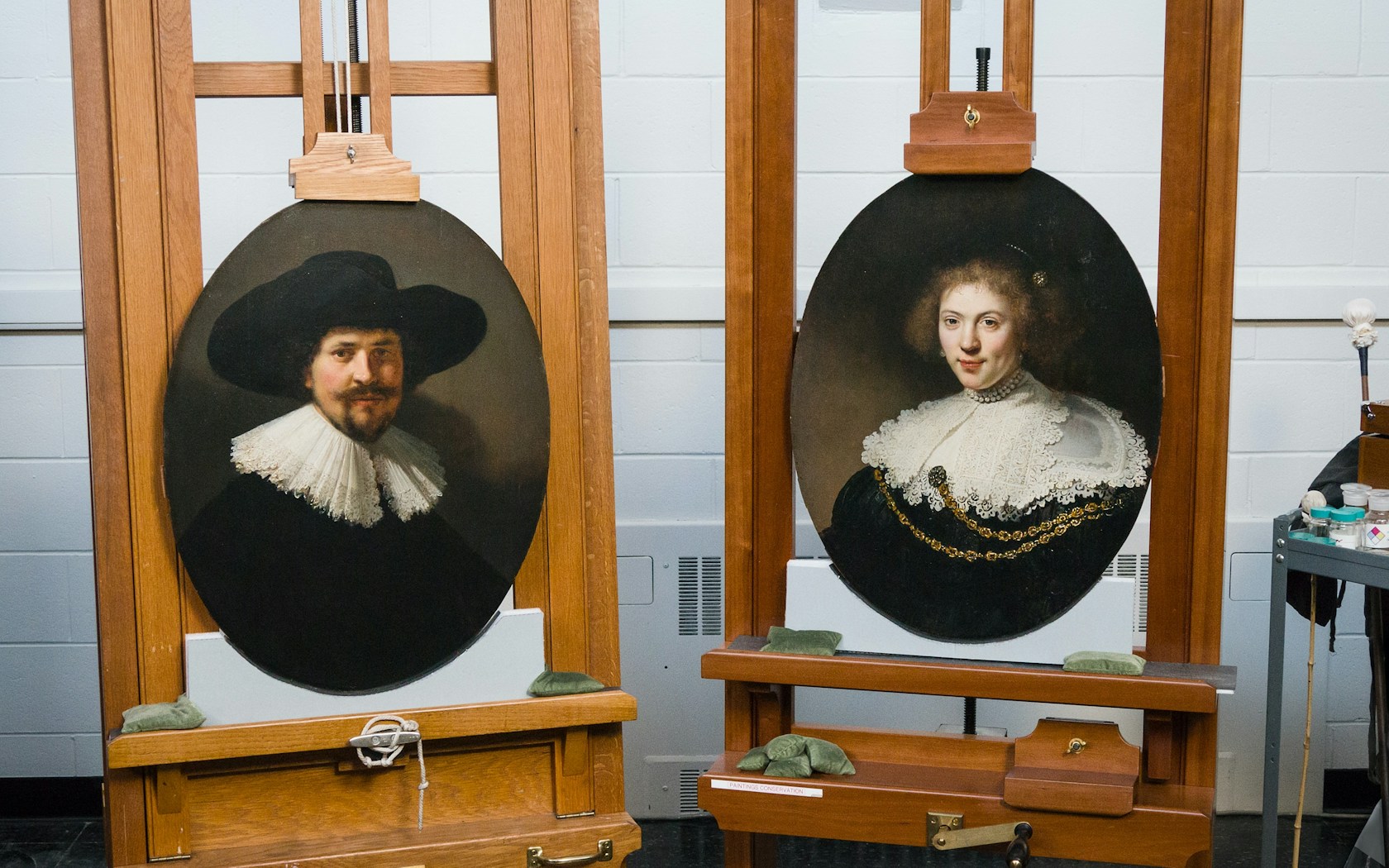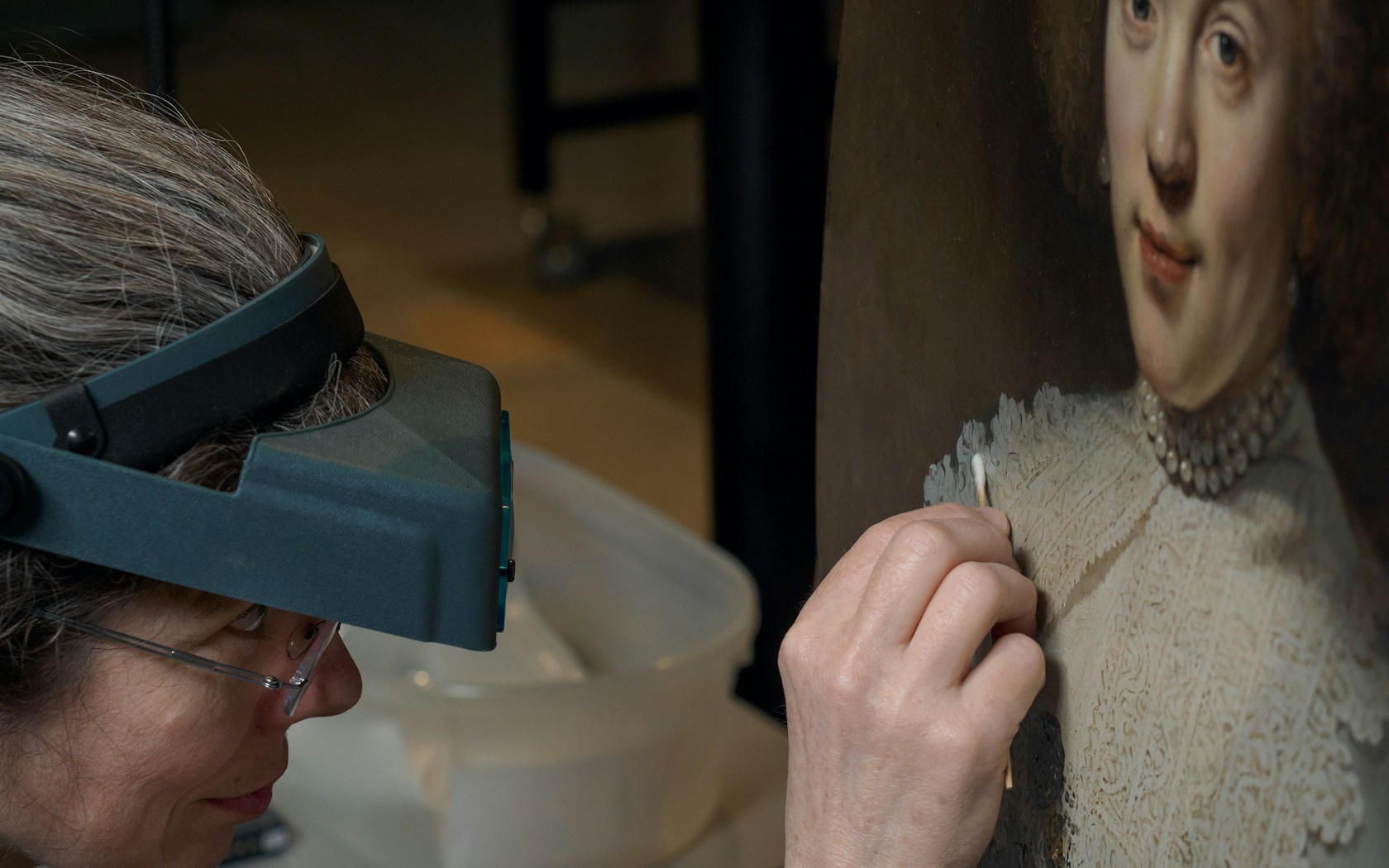
Rembrandt’s Brushstrokes Are Revealed after Restoration of This Portrait from the Museum of Fine Arts, Boston
The quality and beauty of this unknown woman are uncovered after restoration supported by the TEFAF Museum Restoration Fund
- By TEFAF Editorial
- Museum Restoration Fund
Founded in 1870, the Museum of Fine Arts, Boston (MFA) houses an extraordinary collection that encompasses nearly 500,000 works of art, from ancient Egyptian to contemporary. Within the collection are a pair of oval portraits by Rembrandt Harmensz van Rijn (1606–1669): Portrait of a Man Wearing a Black Hat (1634) and Portrait of a Woman Wearing a Gold Chain (1634). The museum intended to restore both artworks. For this purpose, TEFAF supported the restoration project of Portrait of a Woman Wearing a Gold Chain.
Paired images of couples were common in the Netherlands in the seventeenth century; this painting and its companion show an unidentified husband and wife. In this picture, Rembrandt captures the viewer’s attention toward the woman's engaging personality and the impressively detailed lace collar. Although the structure of this remarkable portrait was stable, the appearance of the work was problematic. In fact, the painting had not undergone any treatment for around 50 years. Multiple uneven layers of varnish and passages of clumsy retouching were obscuring the paint surface. In addition, a recently applied thick layer of a synthetic (PVA) varnish became gray and under-saturated over time which contributed to further darkening the portrait.
The museum has been able to clean and remove the layers of varnish and retouching that distorted the work. The aim of this restoration work was to render the initial appearance of the portrait and make Rembrandt’s brushstrokes appear again. This project succeeded to reveal the quality and beauty of this portrait. Moreover, it gave the opportunity to the museum to gain more information on the materials and techniques used by the artist. Displaying the artwork in the museum space after the restoration work improves the public experience and knowledge of Rembrandt’s creations.








